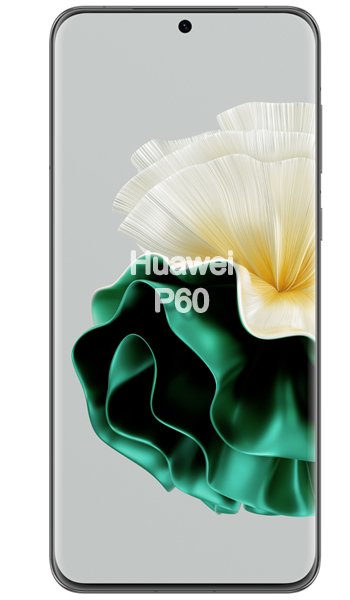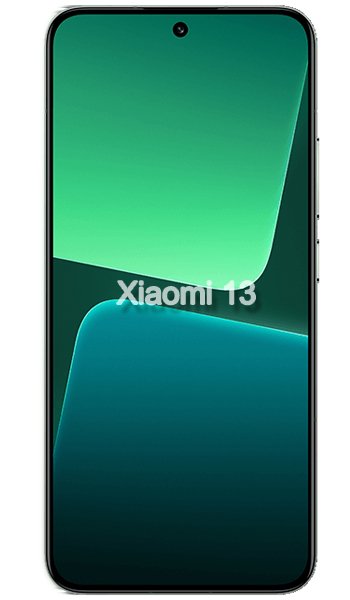Huawei P60 vs Xiaomi 13 Comparison and Differences
Smartphone 1

Huawei P60
Smartphone 2

Xiaomi 13
Smartphone 3
Differences between Huawei P60 and Xiaomi 13 - Which to Choose?
Reasons to consider the Huawei P60:
- HarmonyOS 3.1 (China) / EMUI 13.1 (Europe) might present a different user experience for those looking for an alternative to standard Android environments.
- Higher battery capacity of 4815 mAh may imply slightly longer battery life depending on usage.
- Support for NM (Nano Memory) cards, allowing storage expansion up to 256GB.
- Slightly higher screen resolution of 1220 x 2700.
- LTPO OLED screen technology could provide better battery efficiency with variable refresh rate.
- Higher pixel density screen of 444 PPI.
- Camera setup includes a periscope telephoto lens for improved optical zoom capabilities.
- Additional feature of BDS Satellite Message which could be advantageous for users in China.
- Stereo speakers might offer a better audio experience for media consumption.
- Higher AnTuTu v10 benchmark scores indicating potentially better overall performance.
Reasons to consider the Xiaomi 13:
- Newer chipset Qualcomm SM8550-AB Snapdragon 8 Gen 2, which may offer better performance and efficiency.
- Support for 5G connectivity provides faster internet speeds where available.
- Higher resolution 32 MP front camera for potentially clearer selfies and video calls.
- Corning Gorilla Glass 5 screen protection which could offer better durability against scratches and minor drops.
- Brighter screen with up to 1900 nits (peak) which can be beneficial for outdoor visibility.
- Bluetooth 5.3 offers the latest connectivity features and may provide better device compatibility in the future.
- Faster wired charging at 67W and also supports reverse wireless charging.
- Leica optics for the camera setup could suggest better image quality or brand preference for some users.
- 24-bit/192kHz audio tuning by Harman Kardon for potentially better sound quality.
- Lighter weight at 185 grams.
Huawei P60 or Xiaomi 13 Specs Comparison
or
 Common specs
Common specs
| Brand and model | Huawei P60 | Xiaomi 13 | |
| Rating | (+1) | (+1) | |
| Release date | 2023, March 23 | 2022, December 11 | |
| Dimensions (HxWxD) | 161 x 74.5 x 8.3 mm | 6.34 x 6.34 x 2.93 in | 152.8 x 71.5 x 8.0 mm | 6.02 x 6.02 x 2.81 in | |
| Weight | 197 g | 6.95 oz | 185 g | 6.53 oz | |
| Body Build | Glass front (Gorilla Glass 5), glass back or silicone polymer back, aluminum frame | ||
| Case | buy from Amazon | buy from Amazon | |
| Colors | Black, Green, Violet, Rococo Pearl | White, Black, Flora Green, Mountain Blue, Red, Blue, Yellow, Green, Gray | |
| Battery | 4815 mAh, Li-Po, non-removable | 4500 mAh, Lithium, non-removable | |
| Approximate price | 600 EUR | 999 EUR | |
| Check price | from Amazon | from Amazon |
 Screen
Screen
| Technology | LTPO OLED | AMOLED | |
| Touchscreen | capacitive touchscreen | capacitive touchscreen | |
| Display colors | 1B | 1B | |
| Screen size | 6.67" in | 6.36" in | |
| Screen area | 107.7 cm2 | 97.7 cm2 | |
| Screen format | 20:9 (height:width) | ||
| Screen to body ratio | 89.8% | 89.4% | |
| Screen resolution | 1220 x 2700 px | 1080 x 2400 px | |
| Screen PPI /points per inch/ | 444 PPI | 414 PPI | |
| Screen protection | Corning Gorilla Glass 5 | ||
| Other specs | - 120Hz | - 120Hz -Dolby Vision -HDR10+ -1200 nits (HBM) -1900 nits (peak) |
|
| Screen protector | buy from Amazon | buy from Amazon |
 Camera and Video
Camera and Video
| Rear camera, main | 48 MP, Triple | 50 MP, Triple | |
| Camera specs | -48 MP, f/1.4-f/4.0, 25mm (wide), PDAF, Laser AF, OIS -12 MP, f/3.4, 125mm (periscope telephoto), PDAF, OIS, 5x optical zoom -13 MP, f/2.2, 13mm (ultrawide) |
-50 MP, f/1.8, 23mm (wide), 1/1.49", 1.0µm, PDAF, OIS -10 MP, f/2.0, 75mm (telephoto), 1/3.75", 1.0µm, PDAF, OIS, 3.2x optical zoom -12 MP, f/2.2, 15mm, 120˚ (ultrawide), 1/3.06", 1.12µm |
|
| Functions | LED flash, HDR, panorama | Leica lens, Dual-LED dual-tone flash, HDR, panorama | |
| Video | 4K@30/60fps, 1080p@30/60fps, 1080p@960fps; gyro-EIS | 8K@24fps (HDR), 4K@24/30/60fps (HDR10+, 10-bit Dolby Vision HDR, 10-bit LOG), 1080p@30/120/240/960fps, 1080p@1920fps, gyro-EIS | |
| DxOMark Main Score | 130 | ||
| DxOMark Photo | 131 | ||
| DxOMark Video | 121 | ||
| Front camera, selfie | 13 MP, Single | 32 MP, Single | |
| Specifications | 13 MP, f/2.4, (ultrawide) | 32 MP, f/2.0, 22mm (wide), 0.7µm | |
| Functions | Panorama, HDR | HDR, panorama | |
| Video | 4K@30fps, 1080p@30fps | 1080p@30fps |
 Performance
Performance
| Operating system - OS | HarmonyOS 3.1 (China), EMUI 13.1 (Europe), no Google Play Services | Android 13, MIUI 14 | |
| Chipset | - Qualcomm SM8475 Snapdragon 8+ Gen 1 4G (4 nm) | - Qualcomm SM8550-AB Snapdragon 8 Gen 2 (4 nm) | |
| CPU | - Octa-core (1x3.0 GHz Cortex-X2 & 3x2.5 GHz Cortex-A710 & 4x1.8 GHz Cortex-A510) | - Octa-core (1x3.2 GHz Cortex-X3 & 2x2.8 GHz Cortex-A715 & 2x2.8 GHz Cortex-A710 & 3x2.0 GHz Cortex-A510) | |
| GPU | Adreno 730 | Adreno 740 | |
| External memory | NM (Nano Memory), up to 256GB (uses shared SIM slot) | No | |
| Internal memory | 128GB 8GB RAM, 256GB 8GB RAM, 512GB 8GB RAM | 128GB 8GB RAM, 256GB 8GB RAM, 256GB 12GB RAM, 512GB 12GB RAM |
 Benchmark
Benchmark
| Antutu 10 Total | 1221155 | 1554502 | |
| Antutu 10 CPU | 351459 | 387991 | |
| Antutu 10 GPU | 461711 | 604615 | |
| Antutu 10 Mem | 177264 | 282658 | |
| Antutu 10 UX | 351459 | 387991 | |
| Antutu 9 Total | 989478 | 1293414 | |
| GeekBench 6 Single Core | 1704 | ||
| GeekBench 6 Multi Core | 5074 | ||
| GeekBench 6 OpenCL | 6694 | ||
| GeekBench 6 Vulkan | 4708 | ||
| GeekBench 5 Single Core | 1365 | 1298 | |
| GeekBench 5 Multi-Core | 4489 | 4312 |
 Communication and Connectivity
Communication and Connectivity
| SIM card | Hybrid Dual SIM (Nano-SIM, dual stand-by) | Dual SIM (Nano-SIM, dual stand-by) | |
| Network | GSM / CDMA / HSPA / CDMA2000 / LTE | GSM / CDMA / HSPA / EVDO / LTE / 5G | |
| Bands | -2G - GSM 850 / 900 / 1800 / 1900 - SIM 1 & SIM 2 CDMA 800 -3G - HSDPA 800 / 850 / 900 / 1700(AWS) / 1900 / 2100 CDMA2000 1x -4G - 1, 2, 3, 4, 5, 7, 8, 12, 17, 18, 19, 20, 26, 28, 34, 38, 39, 40, 41 |
-2G - GSM 850 / 900 / 1800 / 1900 - SIM 1 & SIM 2 CDMA 800 -3G - HSDPA 800 / 850 / 900 / 1700(AWS) / 1900 / 2100 CDMA2000 1xEV-DO -4G - LTE -5G - SA/NSA |
|
| Speed | HSPA, LTE-A | HSPA, LTE-A, 5G | |
| GPRS | Yes | Yes | |
| Edge | Yes | Yes | |
| Wi-Fi | Wi-Fi 802.11 a/b/g/n/ac/6, dual-band, Wi-Fi Direct | Wi-Fi 802.11 a/b/g/n/ac/6e, dual-band, Wi-Fi Direct | |
| GPS | GPS (L1+L5), GLONASS (B1I+B1c+B2a), BDS (B1I+B1c+B2a), GALILEO (E1+E5a), QZSS (L1+L5), NavIC | GPS (L1+L5), GLONASS (G1), BDS (B1I+B1c+B2a), GALILEO (E1+E5a), QZSS (L1+L5), NavIC (L5) | |
| NFC | Yes; NFC-SIM, HCE | Yes | |
| USB | USB Type-C 3.1, OTG | USB Type-C 2.0, USB On-The-Go | |
| Bluetooth | 5.2, A2DP, LE | 5.3, A2DP, LE |
 Music and Audio
Music and Audio
| Radio | No | No | |
| Headphone jack | No | No | |
| Others | - 24-bit/192kHz audio -Tuned by Harman Kardon |
 Other features
Other features
| Sensors | - Fingerprint (under display, optical), accelerometer, gyro, proximity, compass, color spectrum , Infrared port | - Fingerprint (under display, optical), accelerometer, proximity, gyro, compass, color spectrum , Infrared port | |
| Other extras |
- BDS Satellite Message - 66W wired -50W wireless - IP68 dust/water resistant (up to 1.5m for 30 min) |
- Fast charging 67W, 100% in 38 min -Power Delivery 3.0 -Quick Charge 4 -Wireless charging 50W, 100% in 48 min -Reverse wireless charging 10W - IP68 dust/water resistant (up to 1.5m for 30 mins) |
Reviews and Opinions on Huawei P60 and Xiaomi 13
If you had to recommend one of these phones to a friend, which one would it be and why? Share your arguments using the Add Opinion button!

